Un materiale che tutti noi conosciamo, che in molti ammiriamo e che alcuni possiedono. Che sia per una abitazione super moderna in centro città o un casolare rustico in mezzo alle campagne, una lastra di marmo in cucina, in sala o in bagno aggiunge quella sfumatura raffinata, pulita e quasi aristocratica che si adatta ad ogni ambiente senza doverci pensare troppo. Un’altra particolarità di questo materiale è la sua unicità; chiunque può’ rivestire i suoi banconi in ferro, legno o pietre a base di quarzo modellate apposta, ma il marmo, proveniente direttamente dalle cave e lavorato solo per poter modellare la forma, mantiene le venature create dal tempo e da madre natura, senza nessun aiuto dall’uomo. Abbiamo quindi un materiale che ci potrà dare ogni volta un gioco di venature e colori unico e irripetibile. MA ora vediamo quali sono i principali tipi di marmo. Abbiamo il più conosciuto che è sicuramente il marmo di Carrara, orgoglio italiano conosciuto in tutto il mondo, con uno sfondo generalmente sul grigio con leggere venature di un grigio più scuro, che può variare fino a una leggera tonalità blu-grigia mantenendo venature leggere e sottili. Troviamo poi il marmo di Calacatta, il marmo bianco per eccellenza, scelto per un look più di lusso e pulito. Ha uno sfondo candidamente bianco, con venature spesse e drammatiche di colori variabili dal marrone all’oro, dal beige al grigio scuro. E infine abbiamo lo Statuario, che, come dice il nome, è il marmo che è stato più utilizzato per le sculture antiche, come per esempio il David di Michelangelo. Proveniente anch’esso dalla regione di Carrara, questo marmo presenta uno sfondo bianco come il Calacatta, ma con venature meno drammatiche, di colore grigio scuro, che creano un bellissimo contrasto con lo sfondo. Una cosa importantissima da tenere in considerazione è la manutenzione dei nostri piani in marmo. Bisogna sapere che il marmo non è una pietra durissima, e ciò vuol dire che è facilmente scheggiabile, per esempio con una pesante padella in ferro, e reagisce anche male con le sostanze acide quali vino, pomodoro e succo di limone, creando graffi o patine sulla zona a contatto con questi materiali. Detto questo si potrebbe pensare di scegliere un marmo di Carrara per il bancone della cucina, che con il suo sfondo più sul grigio e le sue venature scure lascerebbe intravedere meno i segni del tempo, e magari uno Statuario per il bagno dove non c’è rischio che si scolori o che si rovini con gli acidi degli alimenti, o potremmo semplicemente ricordarci molto spesso di pulirlo, trattarlo e sigillarlo come si deve per evitare ogni eventualità. Ma questo vale solo per chi ha intenzione di mantenere il suo marmo lucido e splendente come fosse appena arrivato; molti non disdegnano la patina del tempo che conferisce a questo materiale un’anima tramite il duro lavoro che ha dovuto sostenere. Una bella casa tutta in legno con un piano in marmo che dimostra di aver vissuto molti anni riempie la cucina di storia. In ogni caso, che siate Team Carrara, Calacatta o Statuario, il nostro consiglio è quello di andare da un fornitore e chiedere di poter vedere e toccare il materiale in prima persona, cosi da poter scegliere le venature preferite, i colori e lo spessore. Noi consigliamo, voi provate!
A material that we all know, that many admire and some possess. That might be for a super modern home in the city center or a rustic farmhouse in the middle of the countryside, a sheet of marble in the kitchen, living room or bathroom adds that refined nuance, clean and almost aristocratic that adapts to every environment without overthinking it. Another particularity of this material is its uniqueness; anyone can coat their counters in iron, wood or specially shaped quartz-based stones, but marble, comes directly from the quarries and worked just to be able to shape the shape, maintain the veins created by time and mother nature, without any help from man. So we have a material that every time can give a unique and unrepeatable play of veins and colors. But now we see what are the typical principles of marble. We have the most well-known that is certainly Carrara marble, Italian pride known all over the world, with a generally gray background with delicate veins of a darker gray, that can vary to a light blue-gray tone maintaining light and thin veins. Next is the marble from Calacatta, the white marble par excellence, chosen for a more luxurious and clean look. It has a candidly white background with thick and dramatic veins of various colors from brown to gold, from beige to dark gray. And to finish, we
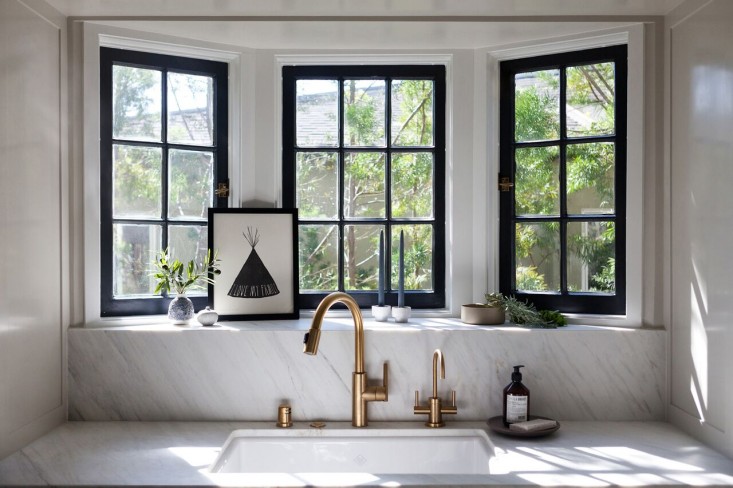
Marmo Calacatta
A material that we all know, that many admire and some possess. That might be for a super modern home in the city center or a rustic farmhouse in the middle of the countryside, a sheet of marble in the kitchen, living room or bathroom adds that refined nuance, clean and almost aristocratic that adapts to every environment without overthinking it. Another particularity of this material is its uniqueness; anyone can coat their counters in iron, wood or specially shaped quartz-based stones, but marble, comes directly from the quarries and worked just to be able to shape the shape, maintain the veins created by time and mother nature, without any help from man. So we have a material that every time can give a unique and unrepeatable play of veins and colors. But now we see what are the typical principles of marble. We have the most well-known that is certainly Carrara marble, Italian pride known all over the world, with a generally gray background with delicate veins of a darker gray, that can vary to a light blue-gray tone maintaining light and thin veins. Next is the marble from Calacatta, the white marble par excellence, chosen for a more luxurious and clean look. It has a candidly white background with thick and dramatic veins of various colors from brown to gold, from beige to dark gray. And to finish, wehave the Statuary, which like the name, is the marble that has been used most for historic sculptures, for example Michelangelo’s David. This one also comes from the Carrara region, this marble presents a white background like the Calacatta, but with less dramatic veins, in dark gray, that create a beautiful contrast with the background. Something very important to take into consideration is the maintenance of our marble tops. We need to know that marble is not a very hard stone, which is to say that it easily chips, for example with a heavy iron pan, and also reacts poorly with acidic substances like wine, tomato and lemon juice, creating scratches or patina on the zone of contact with these materials. Having said this, you should think about the choice of Carrara marble for the kitchen counter, that with its more gray background and its dark veins would allows the signs of aging to be less seen, and maybe a Statuario for the bathroom where there is no risk of discoloration or ruining with acid from the food, or we can simply remember to clean it very often, treat it and seal it to avoid every eventuality. But this is work it only for who has the intention of maintaining their marble squeaky clean as if it had just arrived; many do not disdain the patina of time that gives this material character through the hard work that it had to sustain. A beautiful home all in wood with a marble top that demonstrates it has lived many years fills the kitchen with history. In any case, if you might be Team Carrara, Calacatta or Statuario, our advice is to go to a supplier and ask to see and touch the material in person, so as to be able to choose the perfect veins, colors and thickness. We recommend, you try!

Marmo Calacatta
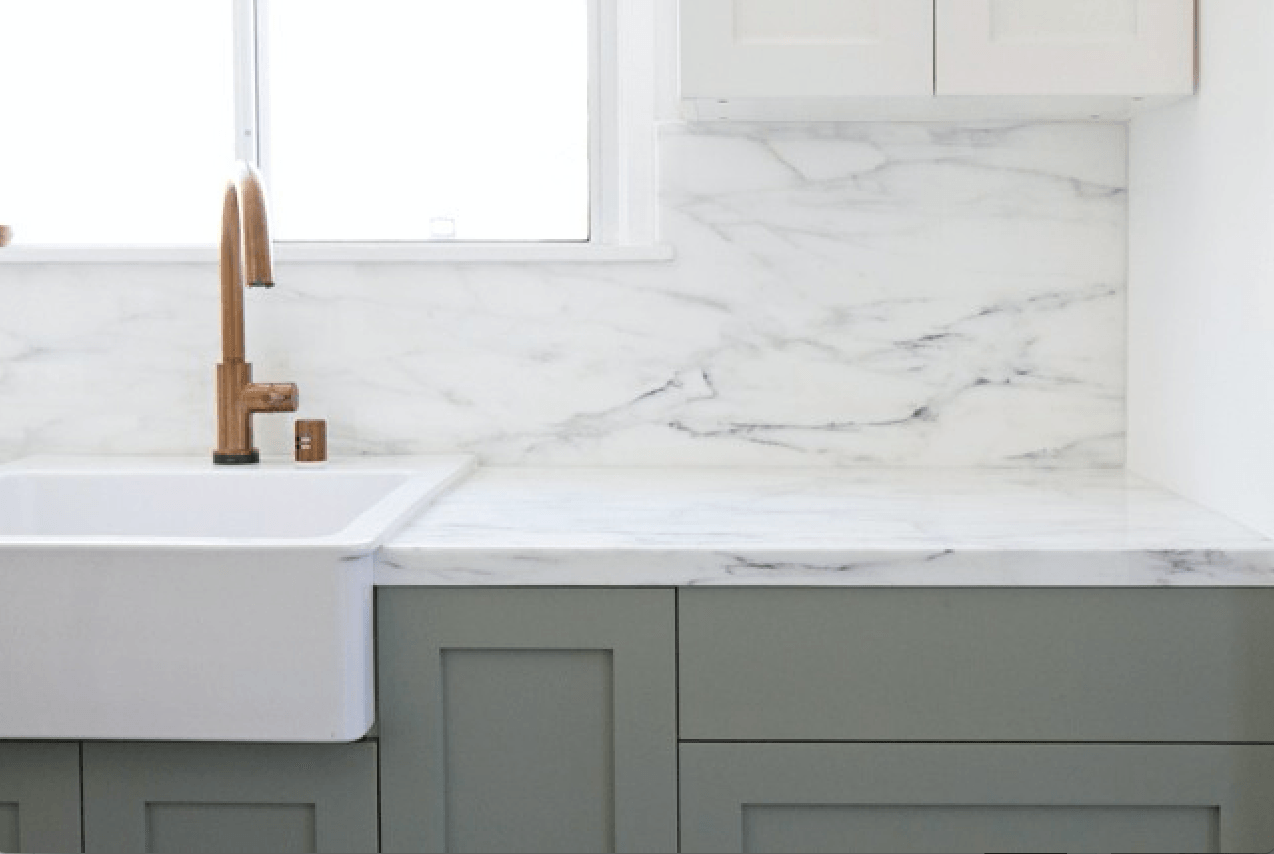
Marmo Calacatta
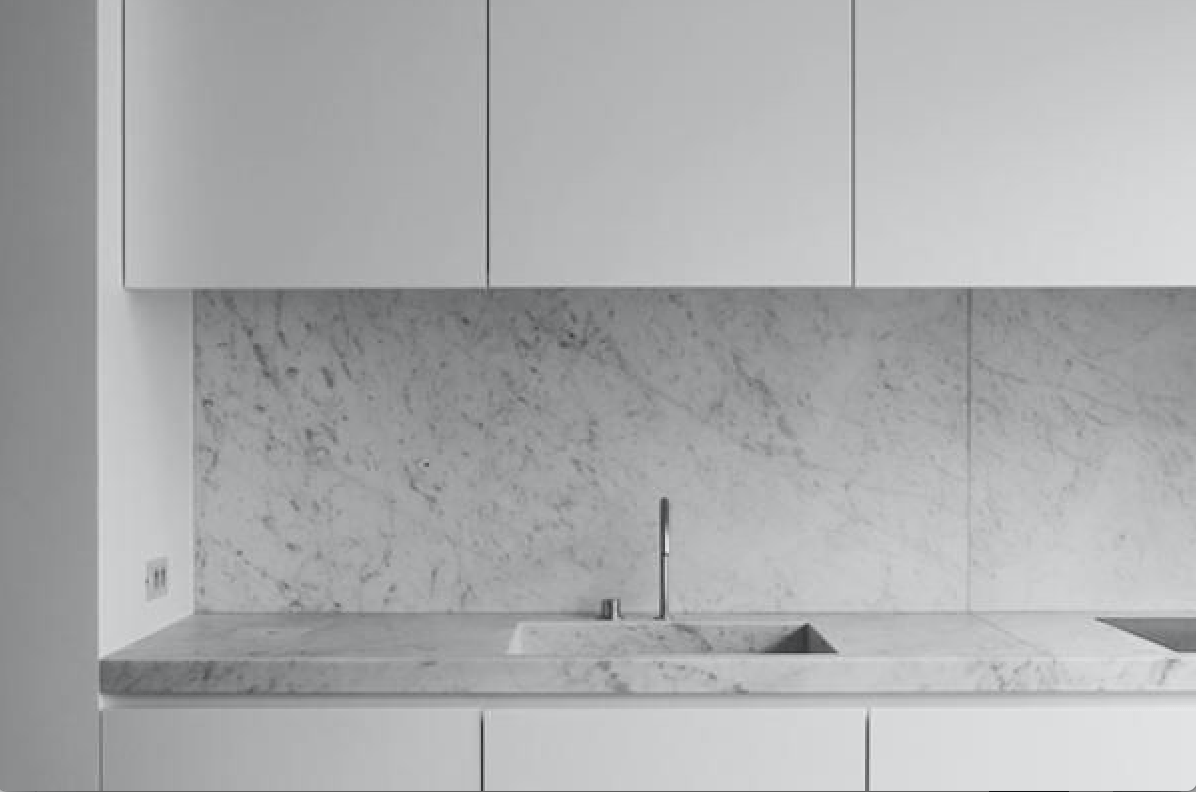
Marmo di Carrara
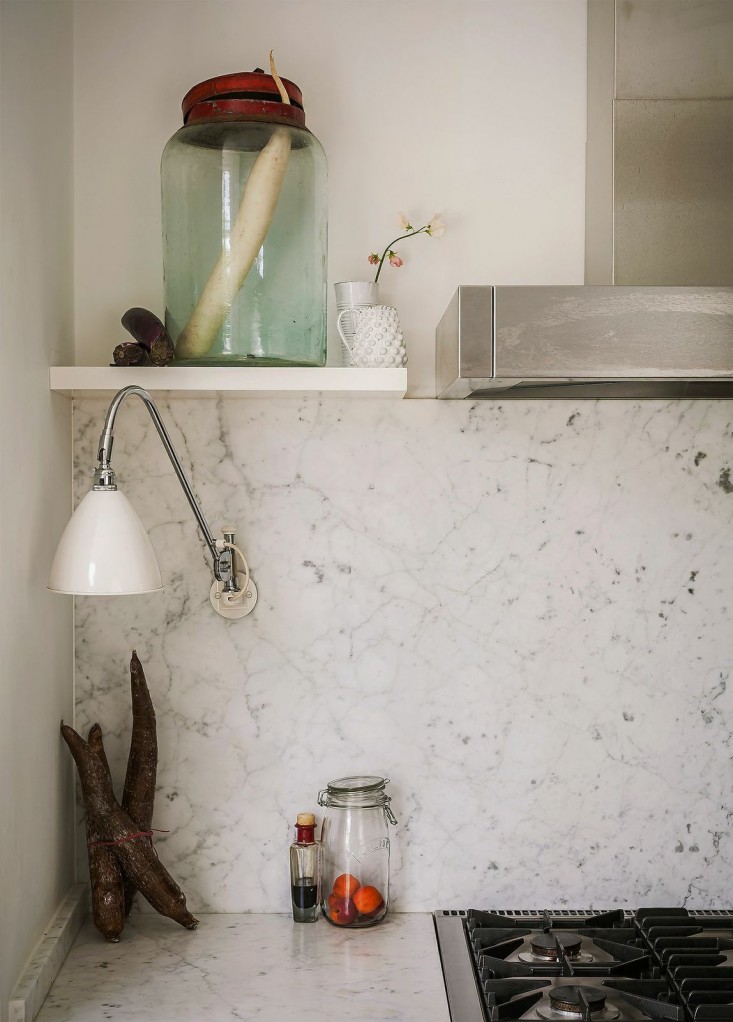
Marmo di Carrara
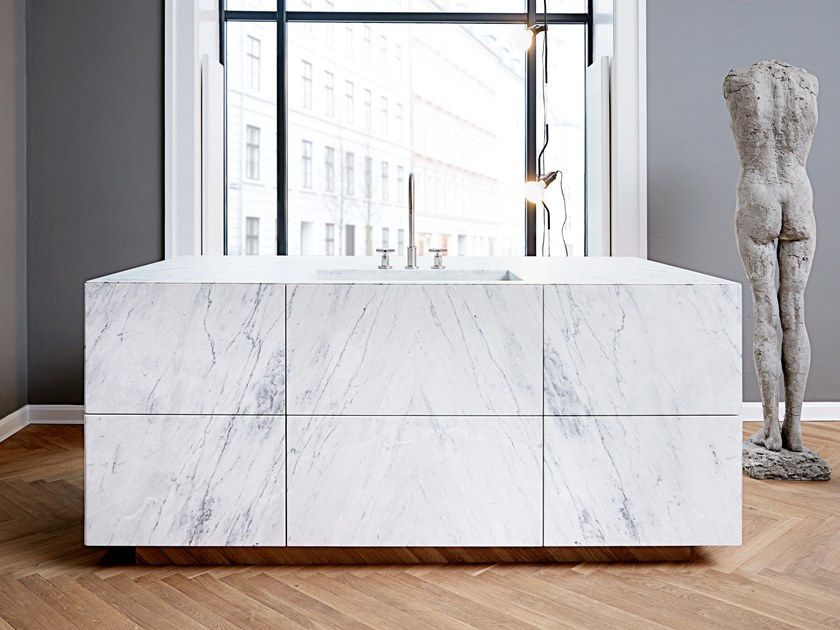
Marmo Statuario
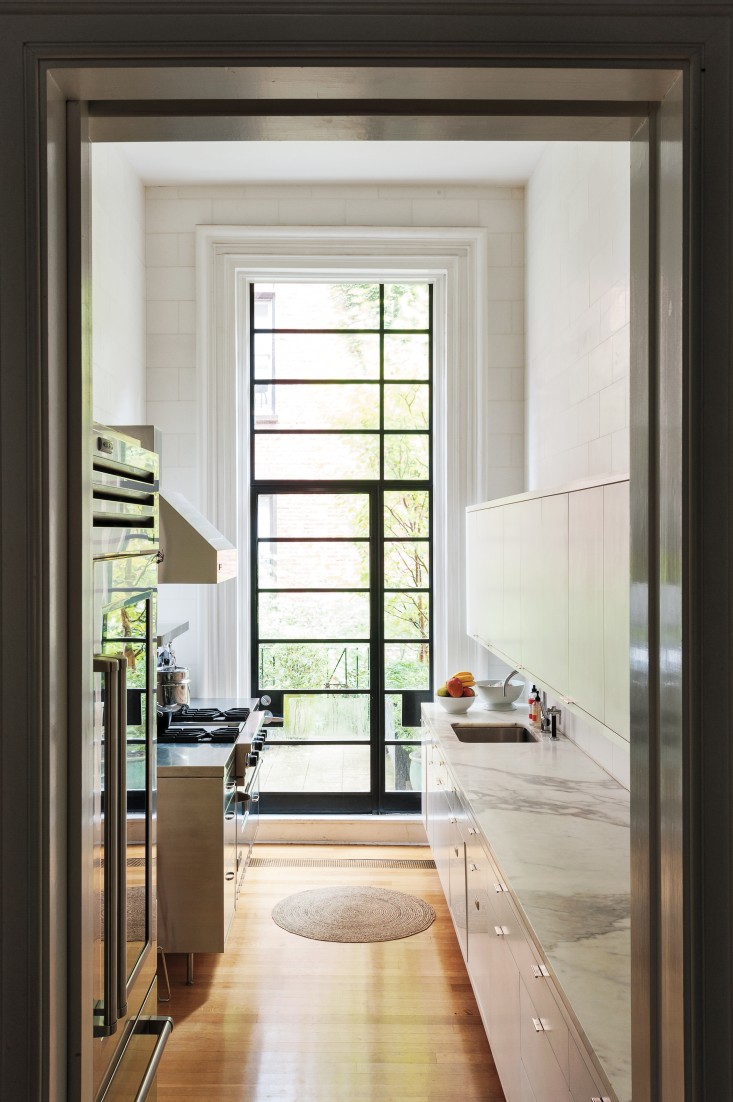
Marmo Statuario
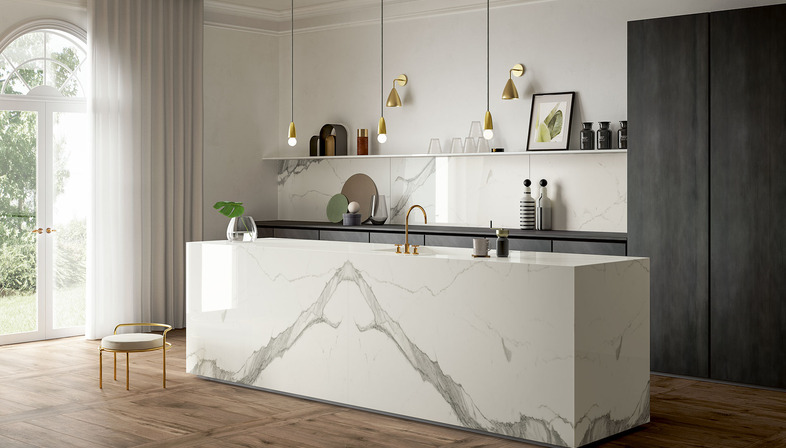
Marmo Statuario
photo: Pinterest








